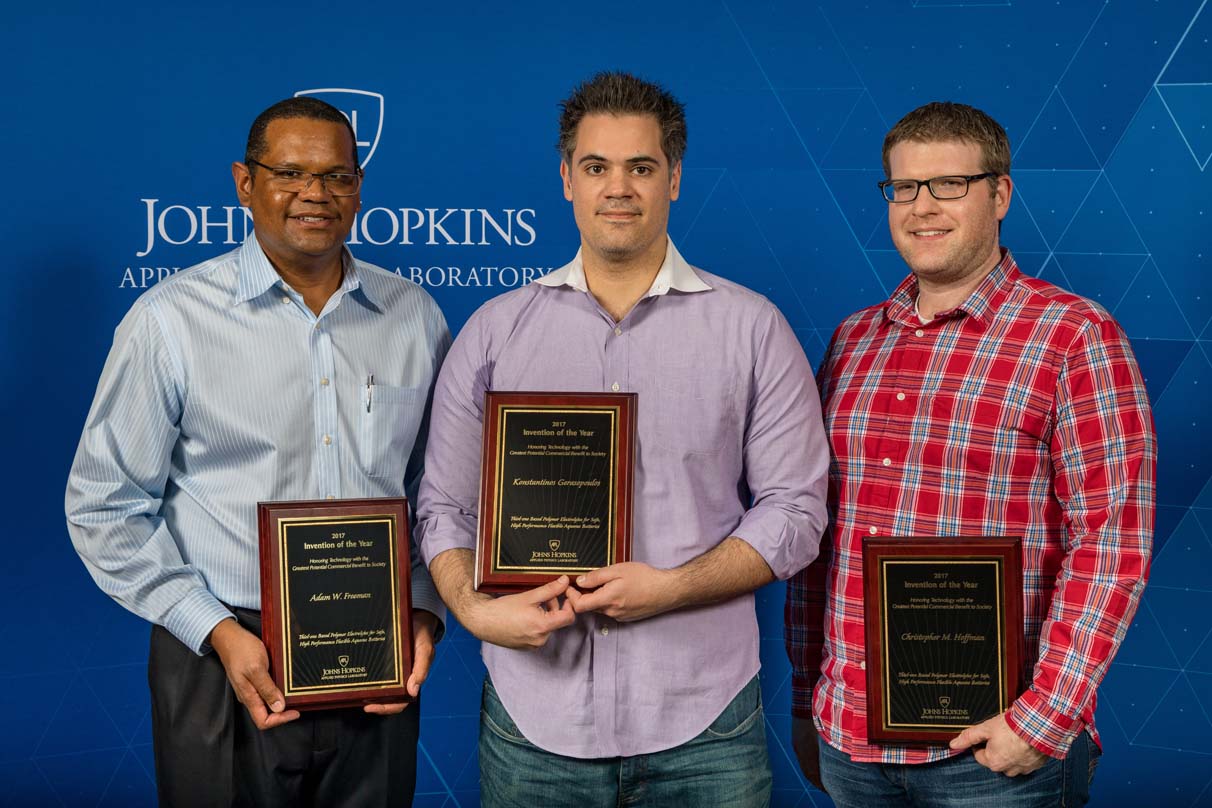Press Release
In a Celebration of Bold Innovation, Johns Hopkins APL Honors Top Inventions, Discoveries and Technical Achievements
A breakthrough flexible, cuttable, submersible and bulletproof lithium-ion battery was announced as the Johns Hopkins Applied Physics Laboratory’s Invention of the Year at the annual APL Achievement Awards ceremony on April 24 on APL’s campus in Laurel, Maryland.
Playing on the theme “Be Bold,” the award was one of many presented during the ceremony, which recognized APL’s best publications, research and development programs, innovation initiatives and mission and enterprise accomplishments in 2017.
In all, over 600 APL staff members were nominated in 128 entries for 23 awards, and 122 staff members were recognized for winning entries. Those entries represented a small portion of the critical contributions APL made for the nation in 2017, and highlighted a few outstanding examples of the Lab’s focus on collaboration, world-class expertise and game-changing impact.
“Thanks to all of our innovative staff members who are dedicated to making critical contributions to the nation’s most critical challenges, and keeping an eye on opportunities to create our next defining innovations,” said Jerry Krill, APL’s assistant director for science and technology.
2017 APL Achievement Award Winners
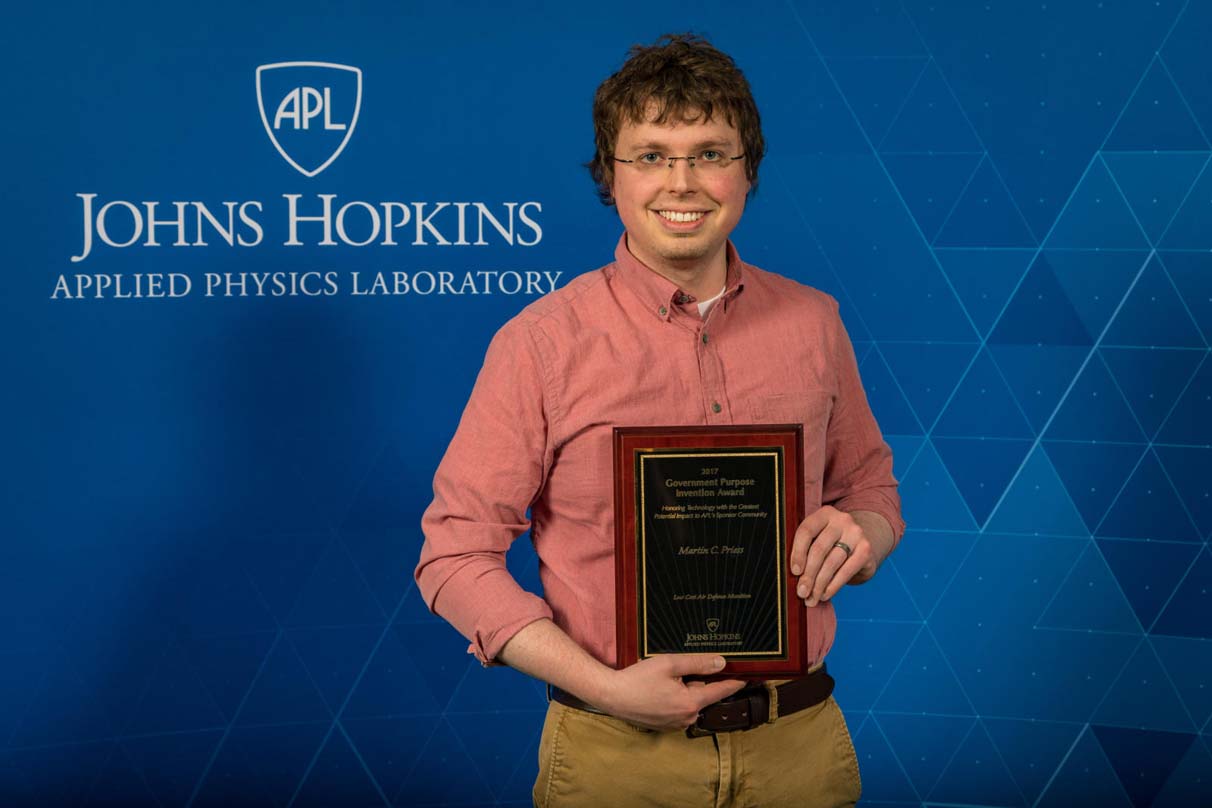
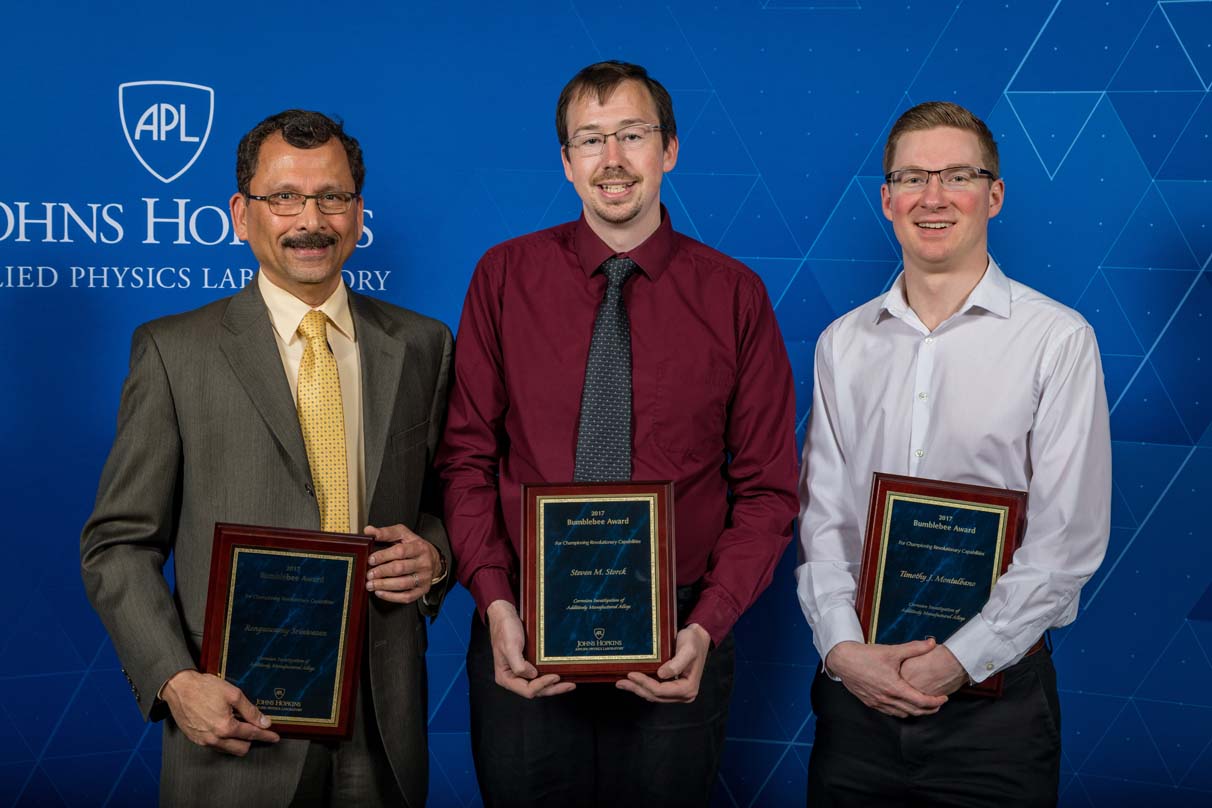
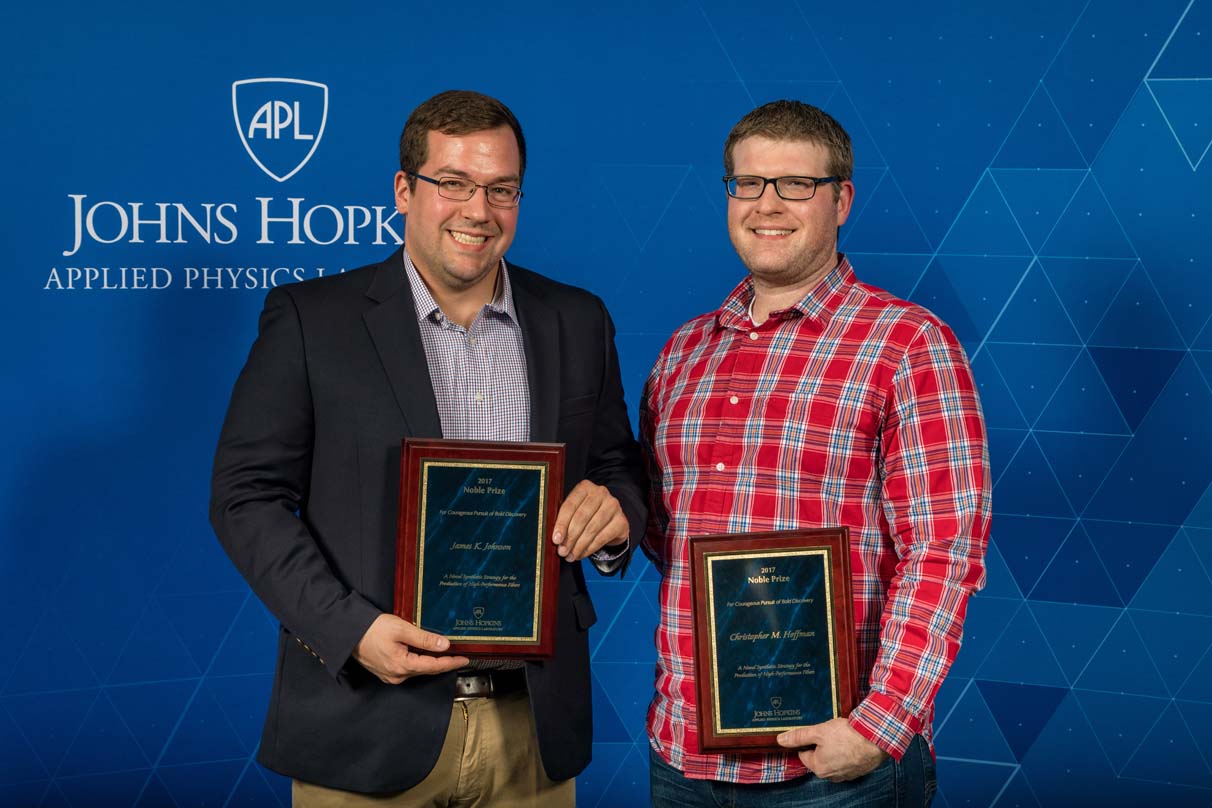
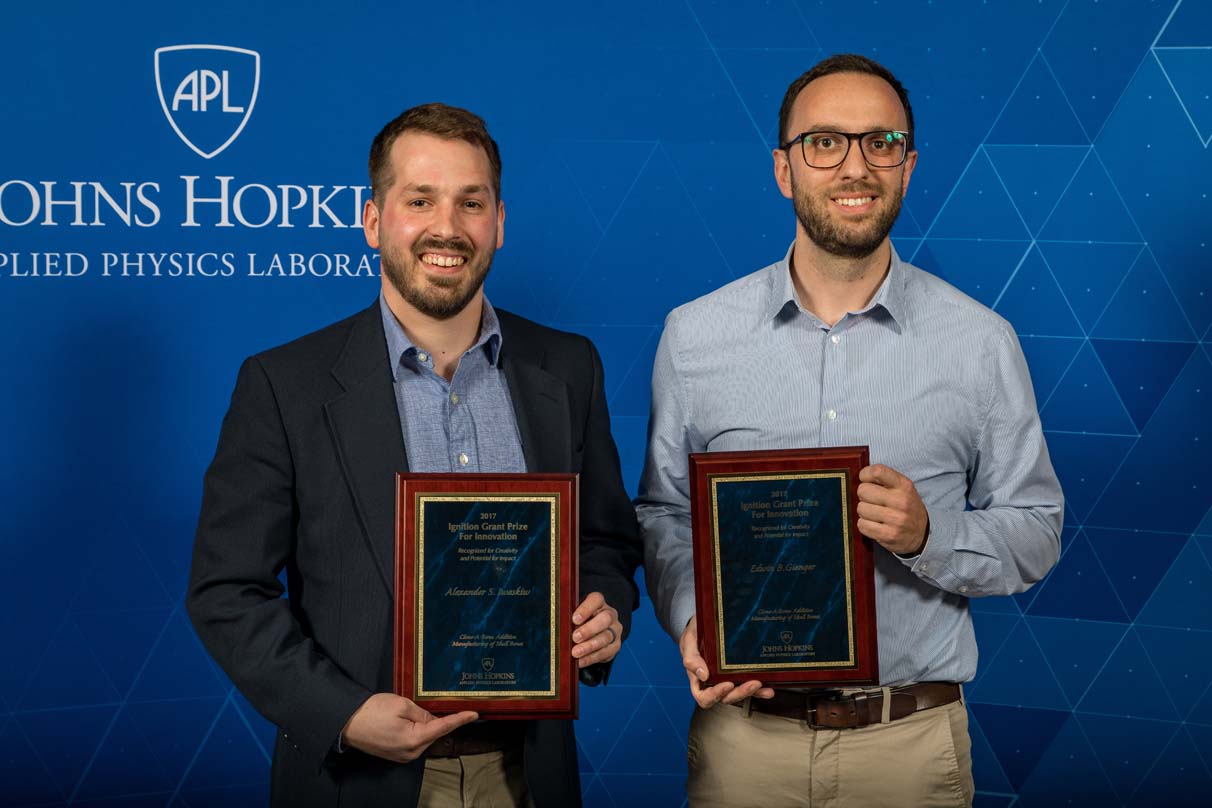
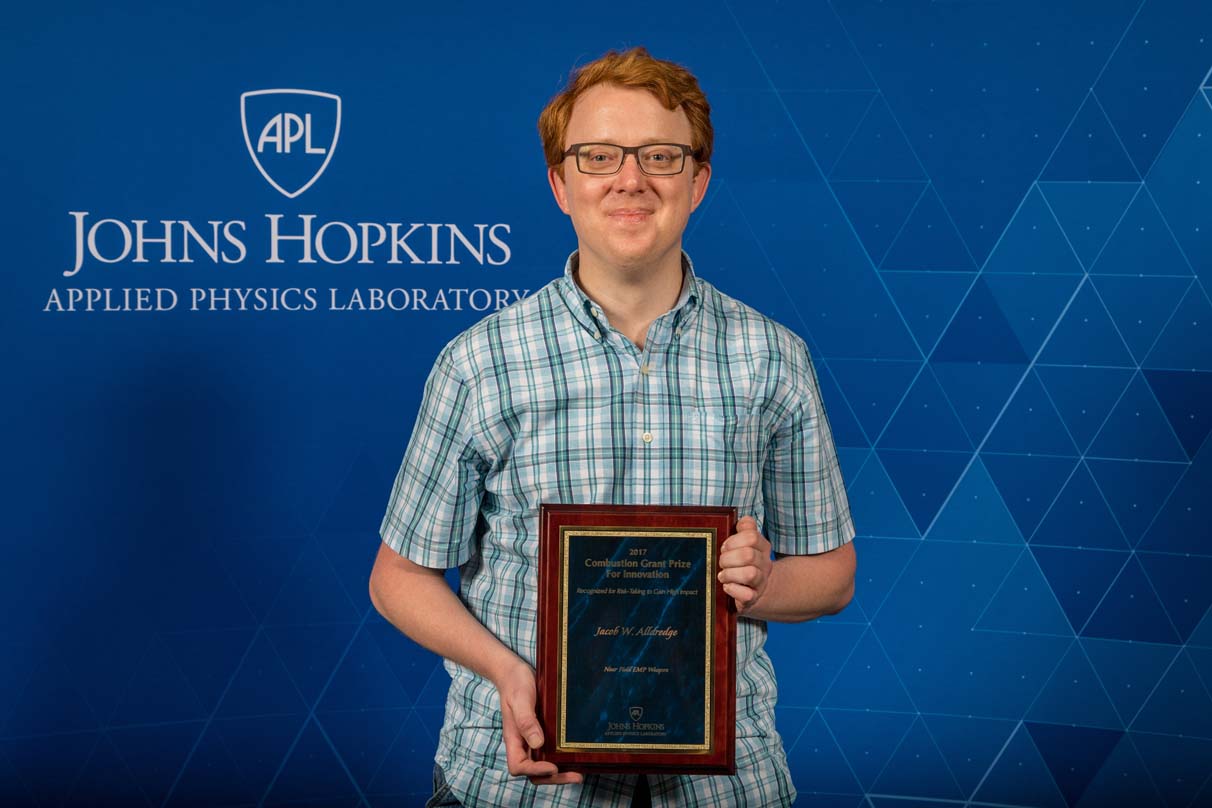
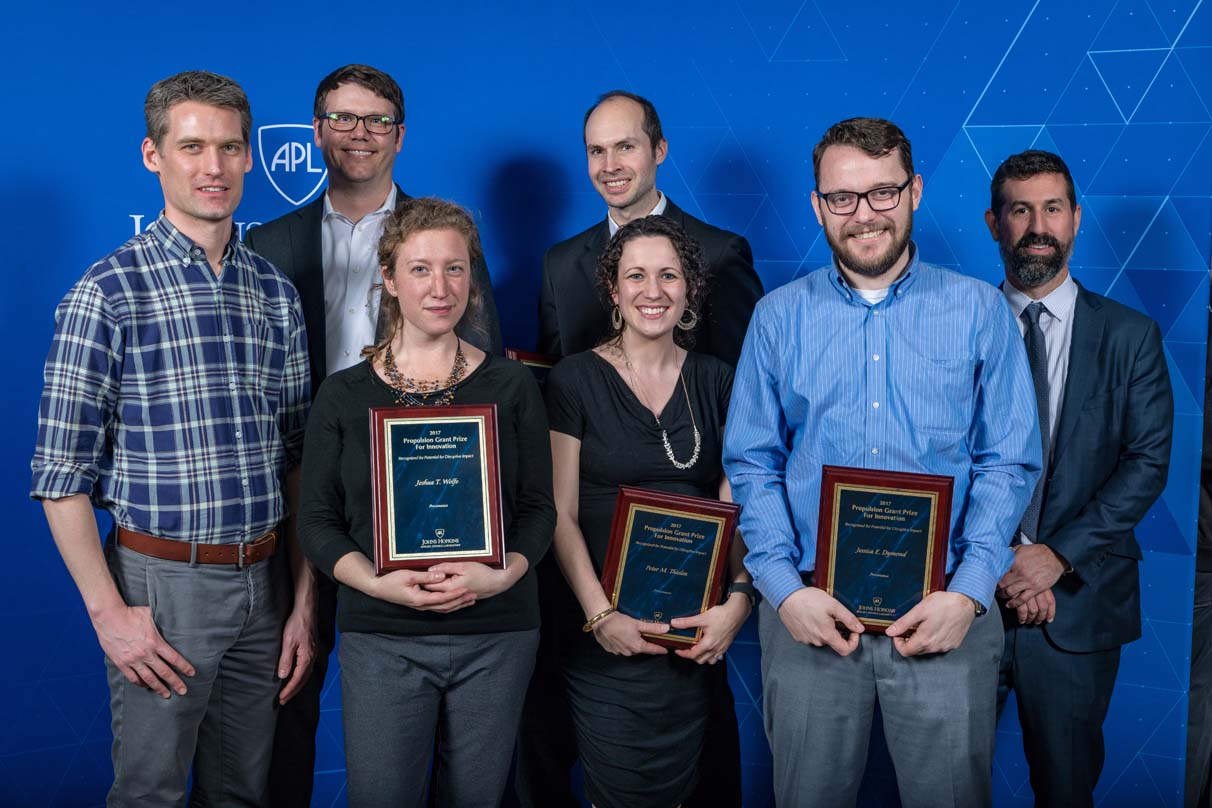
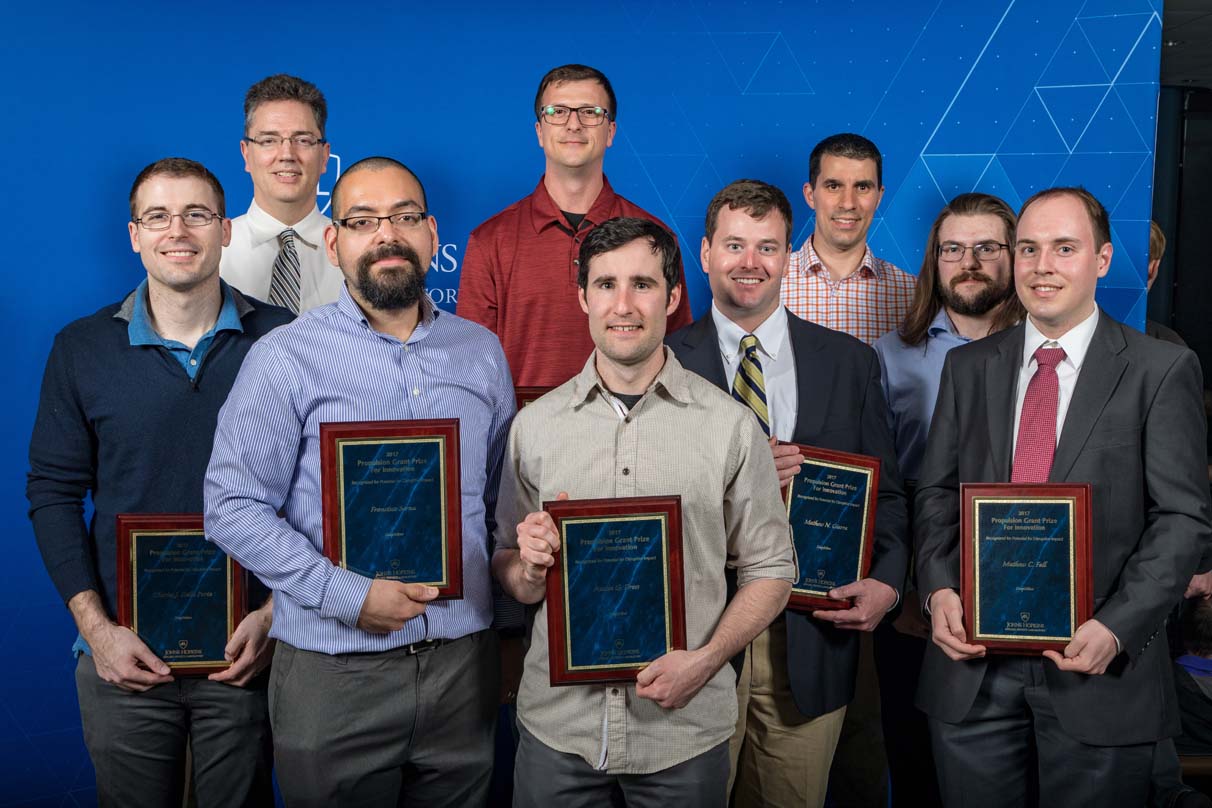
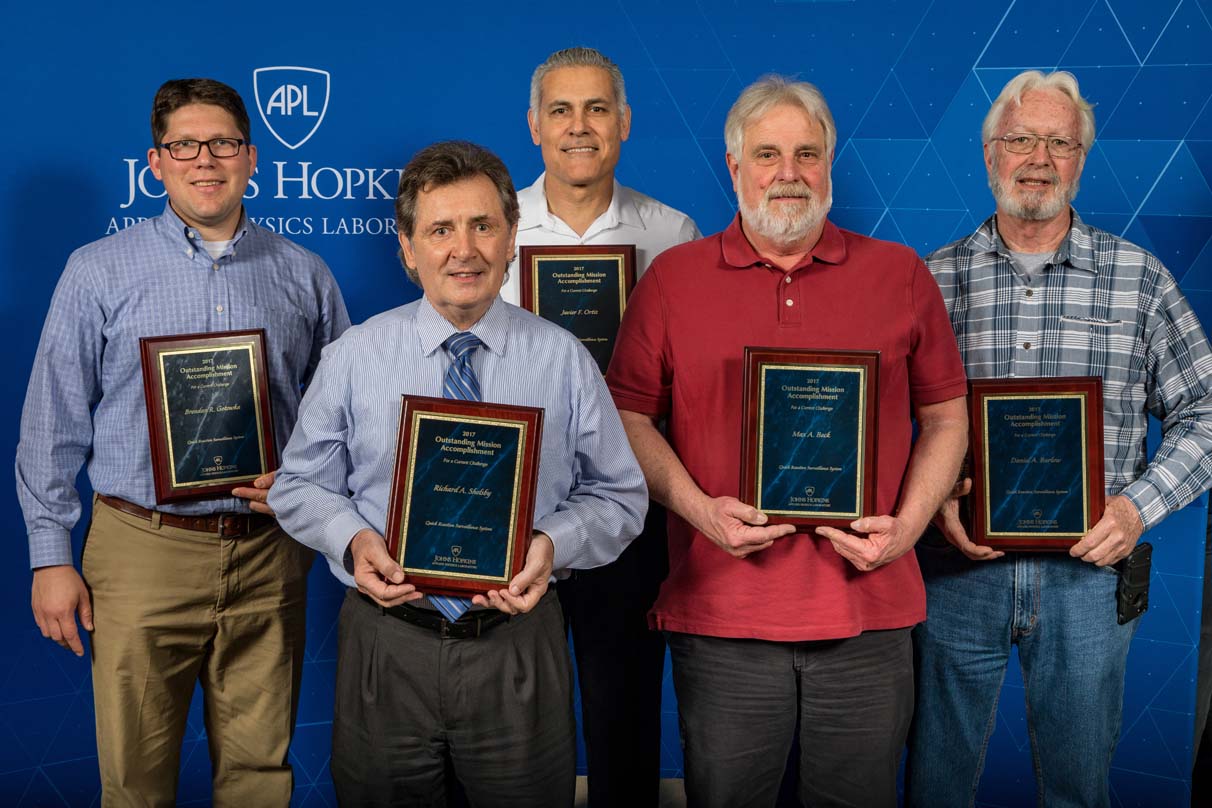
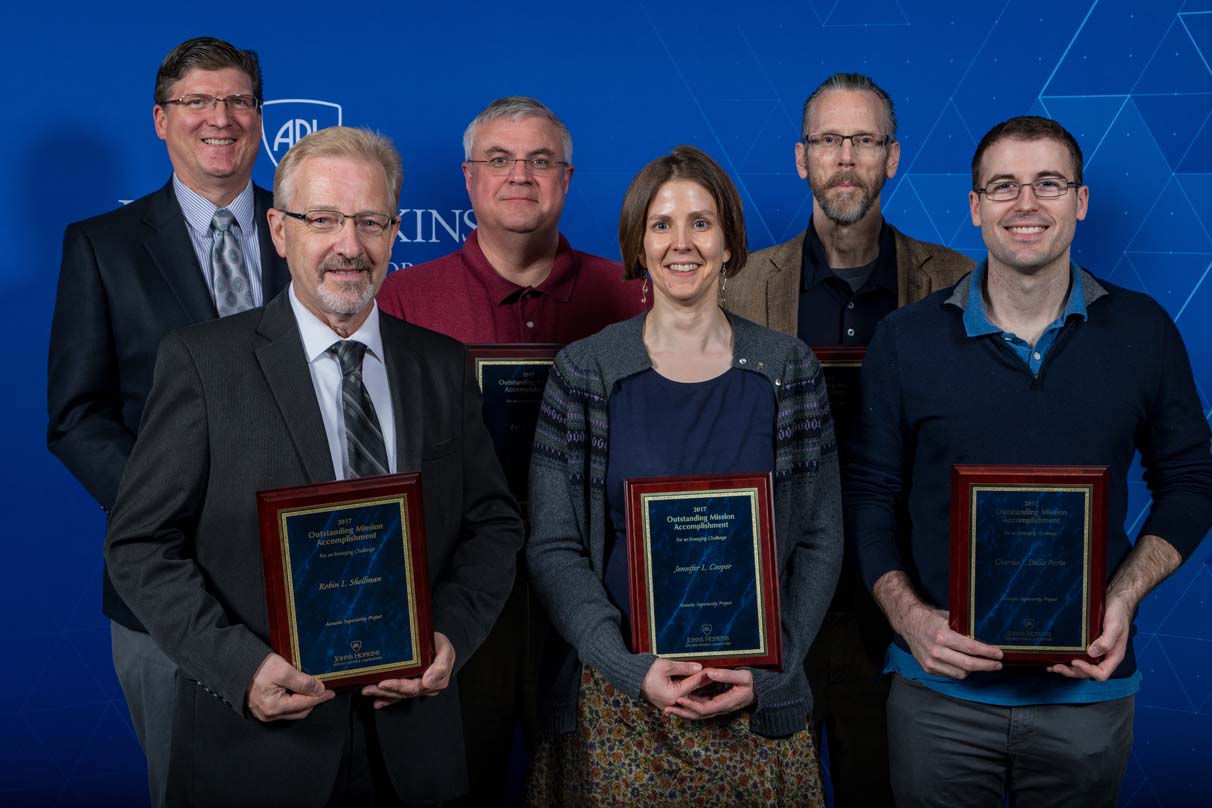
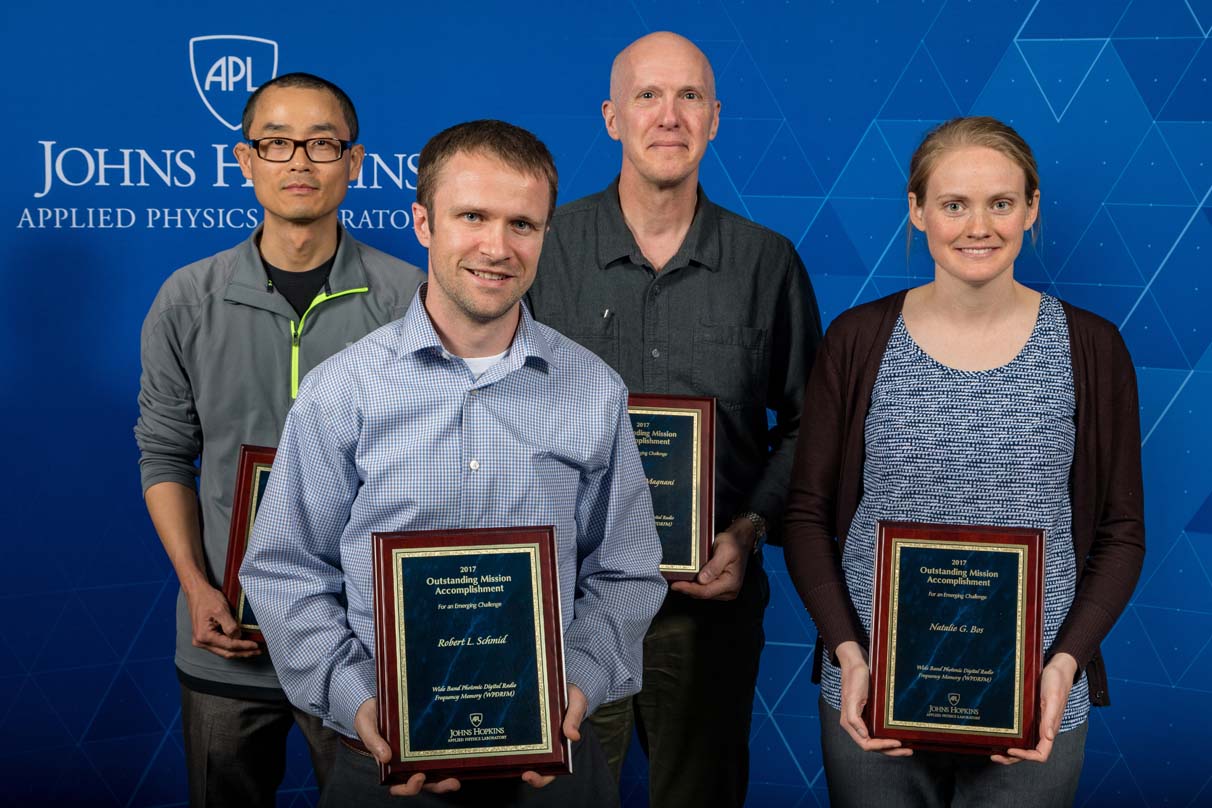
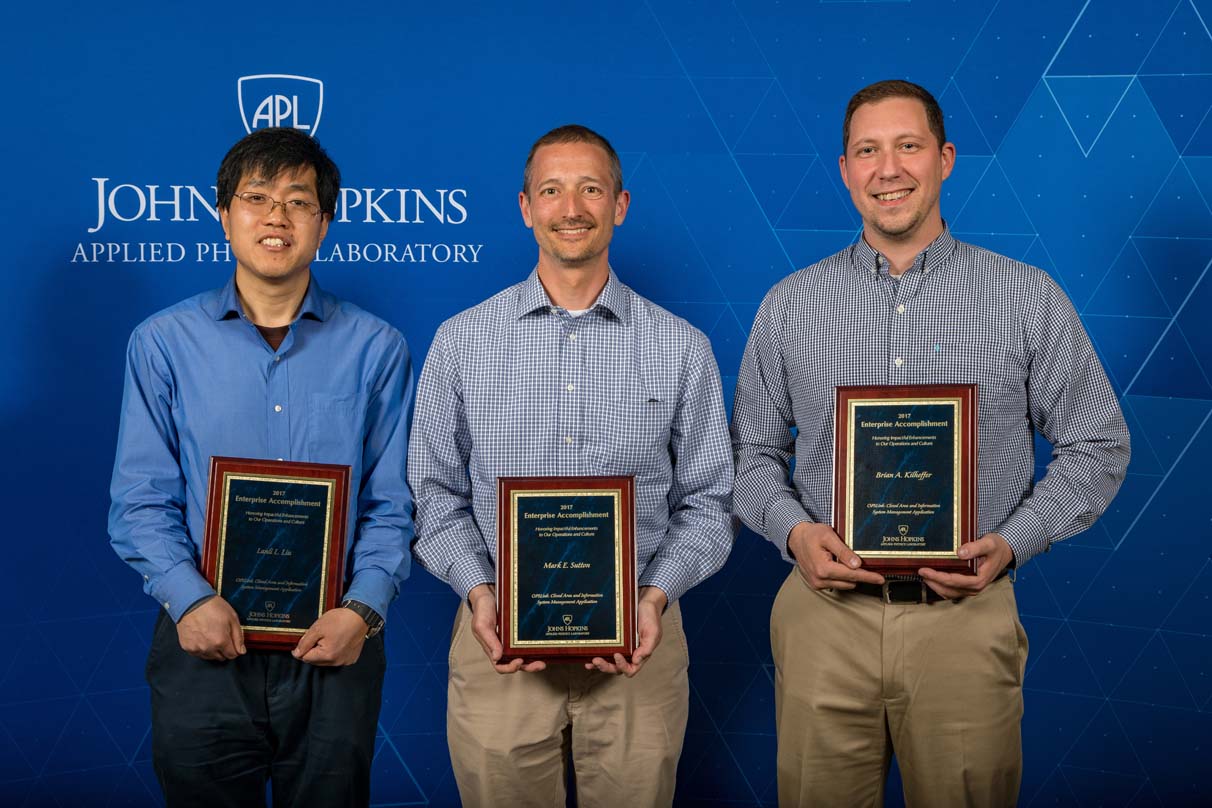
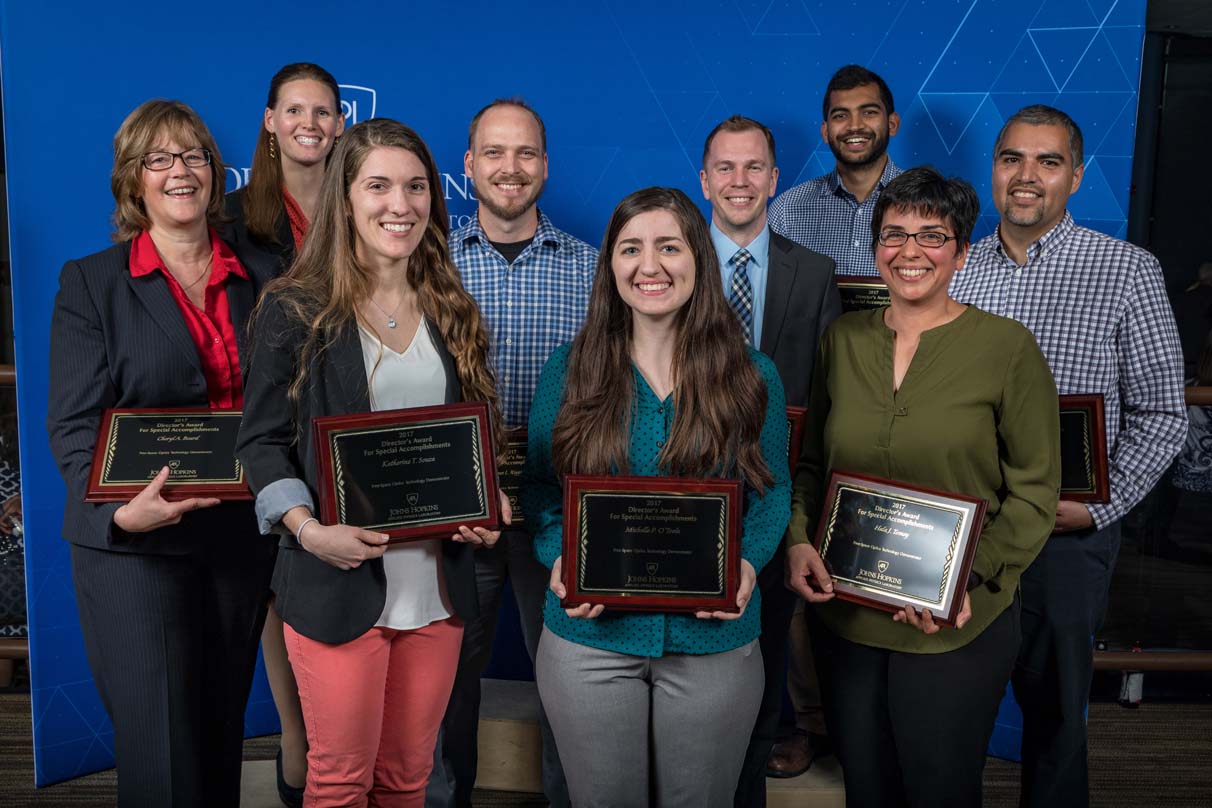
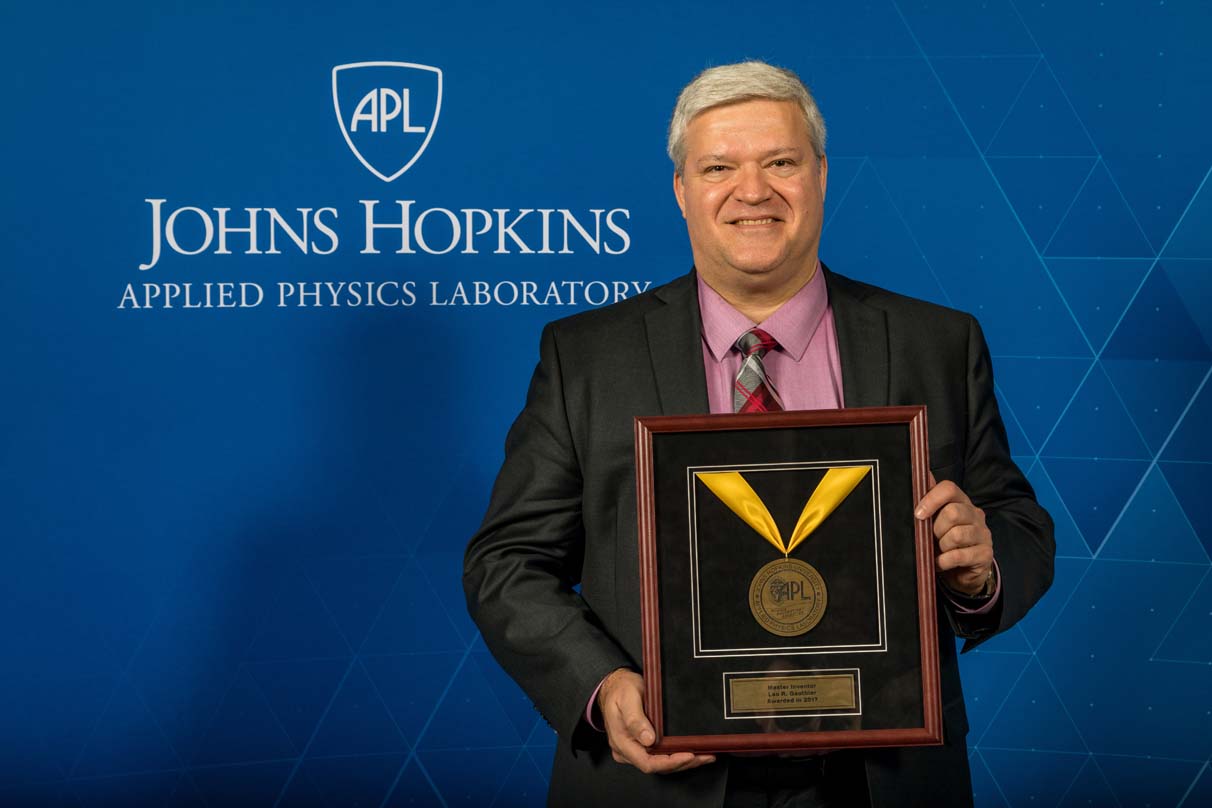
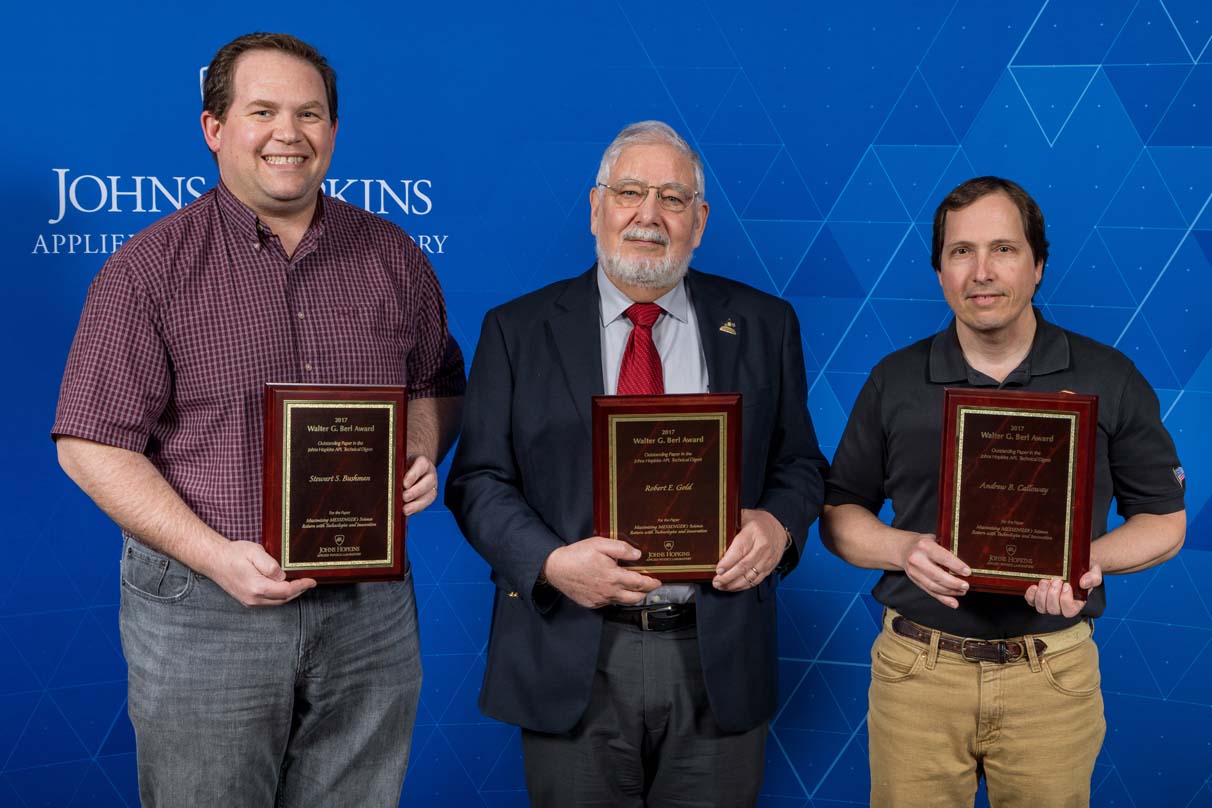
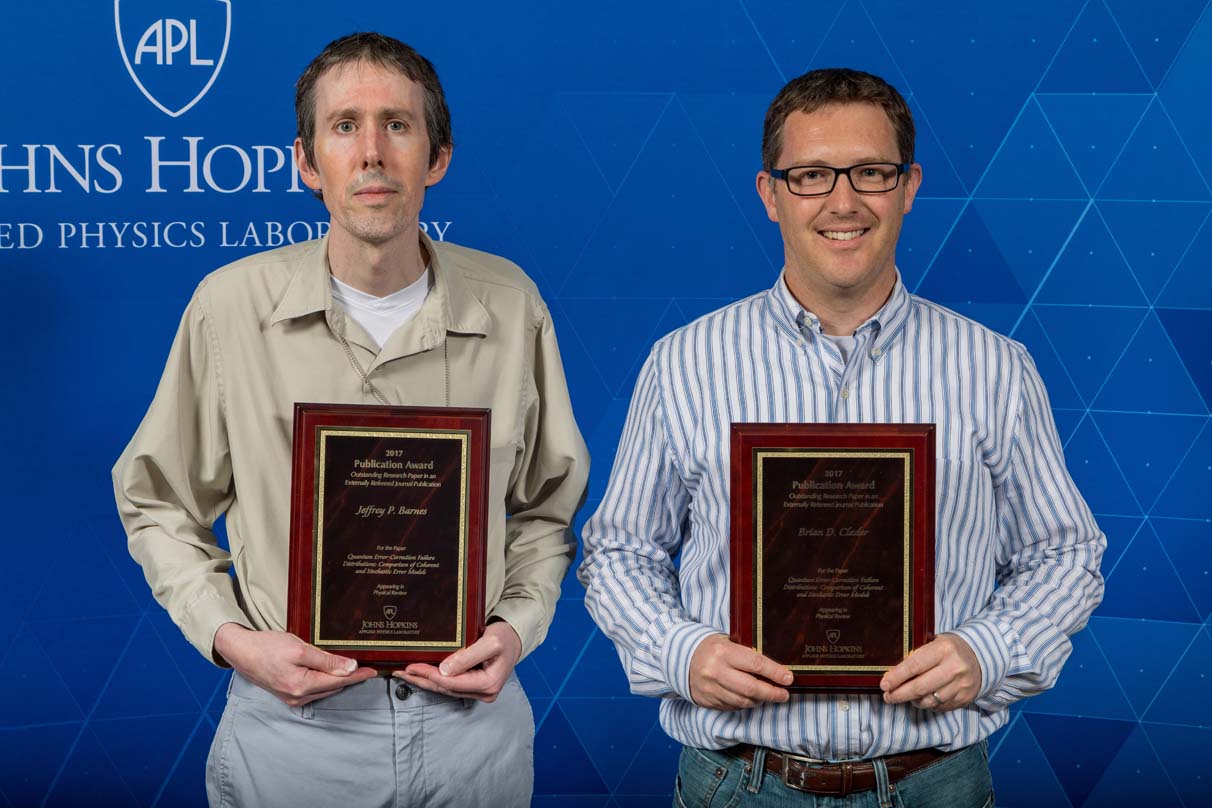
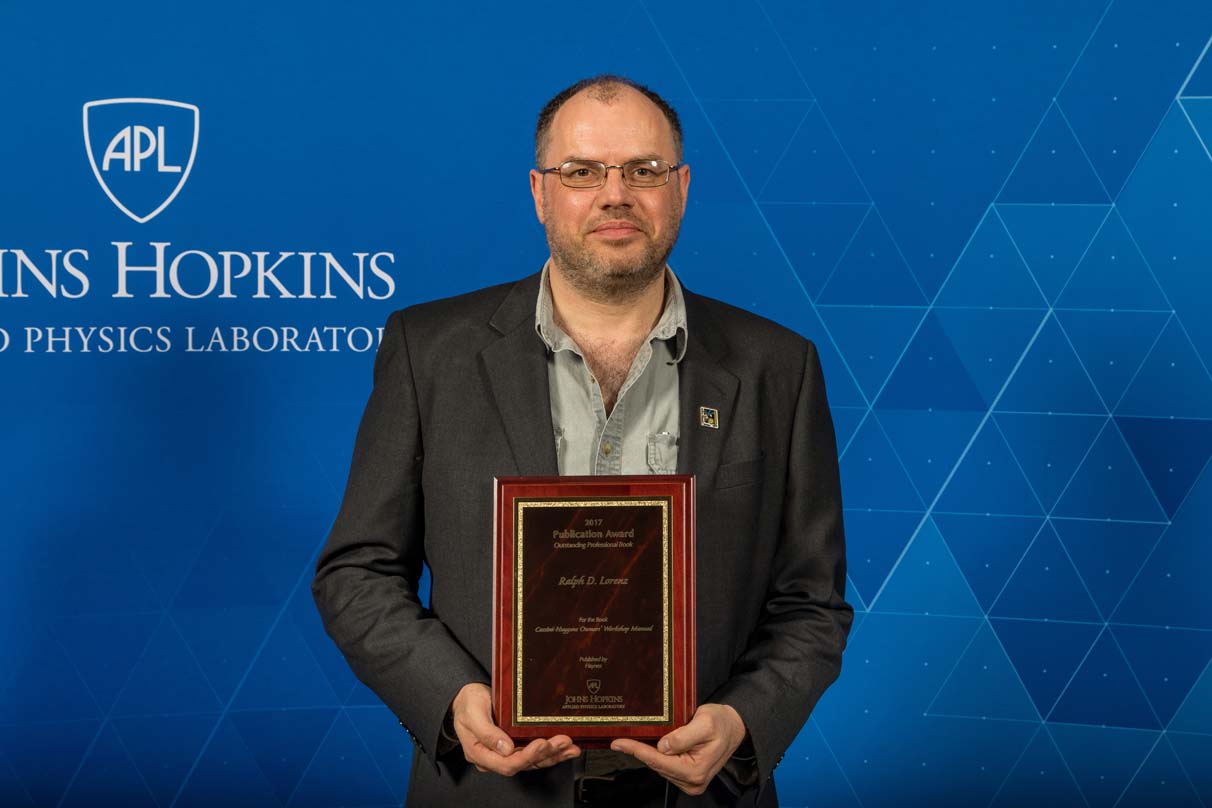
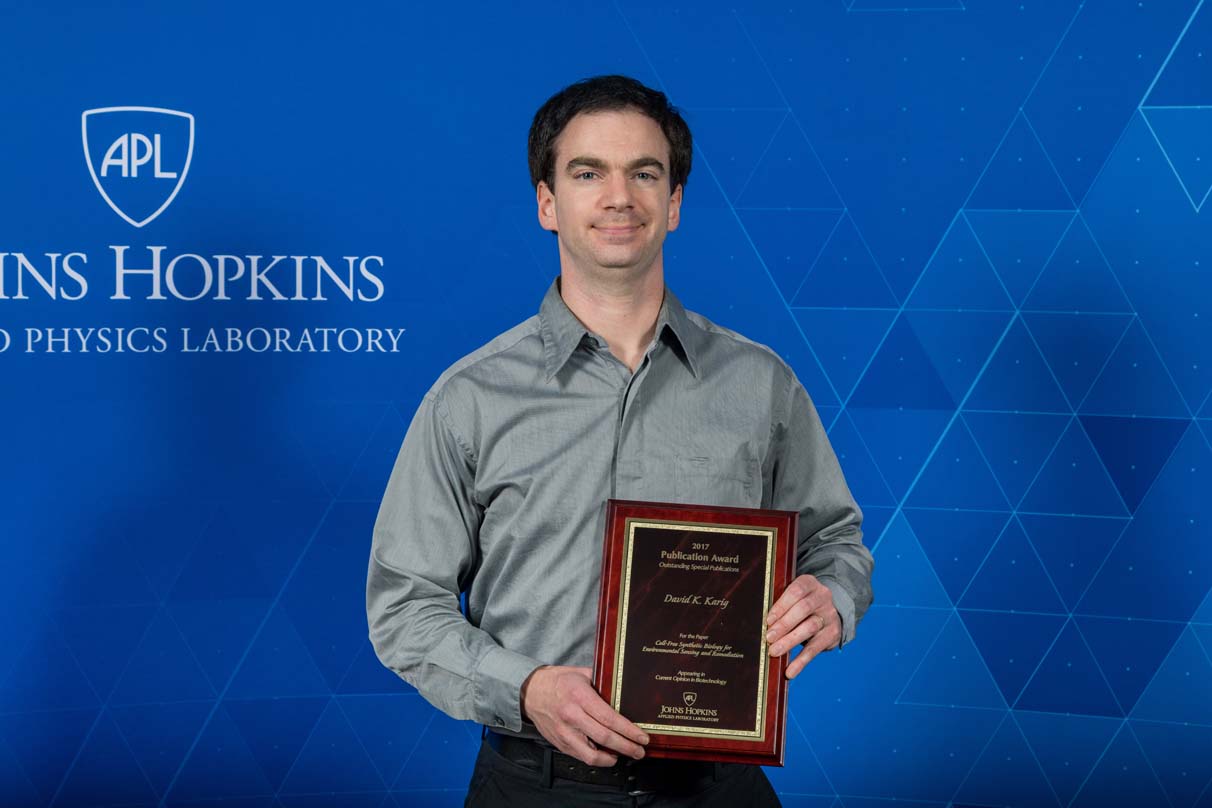
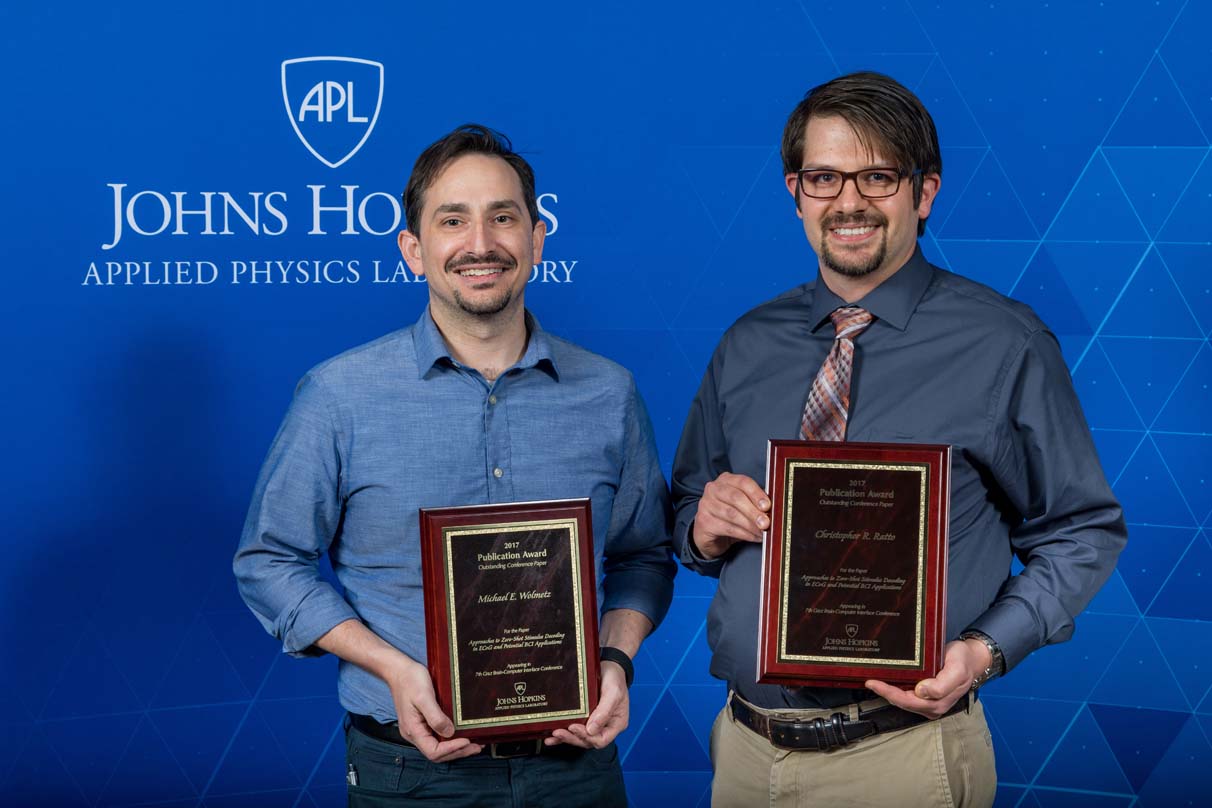
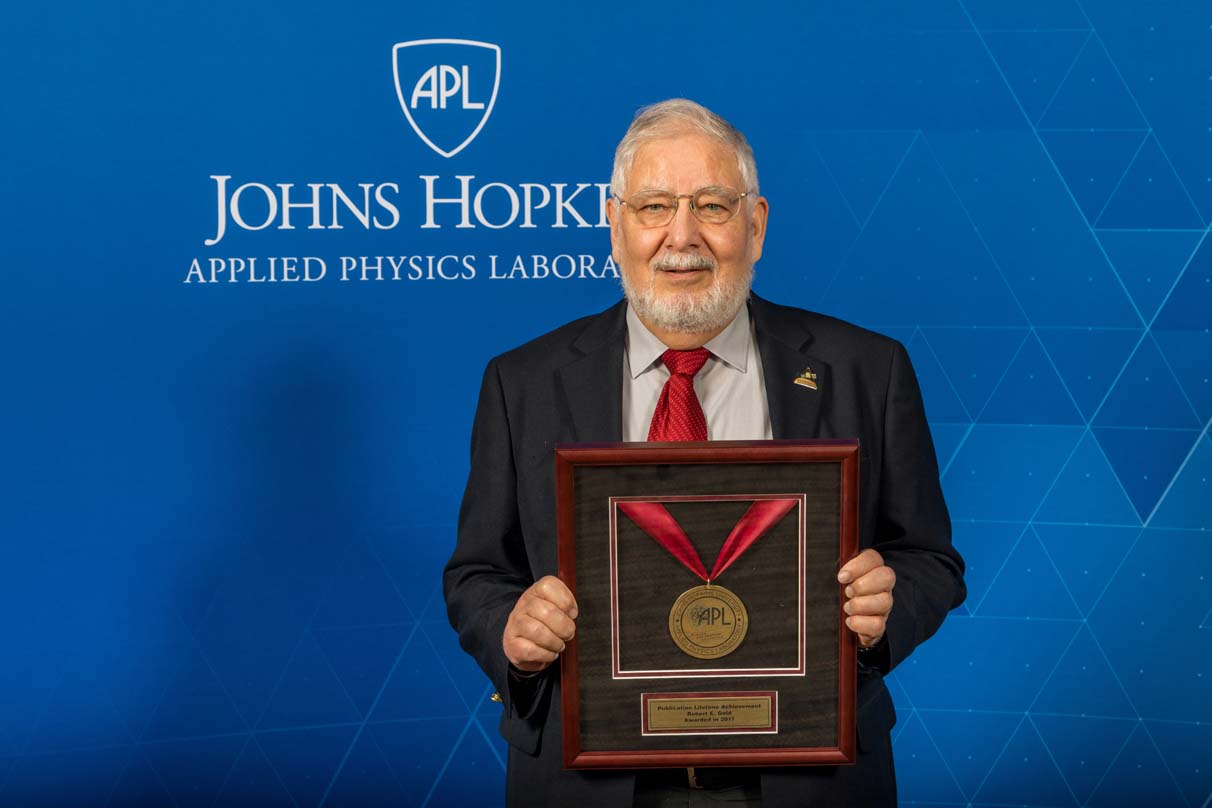

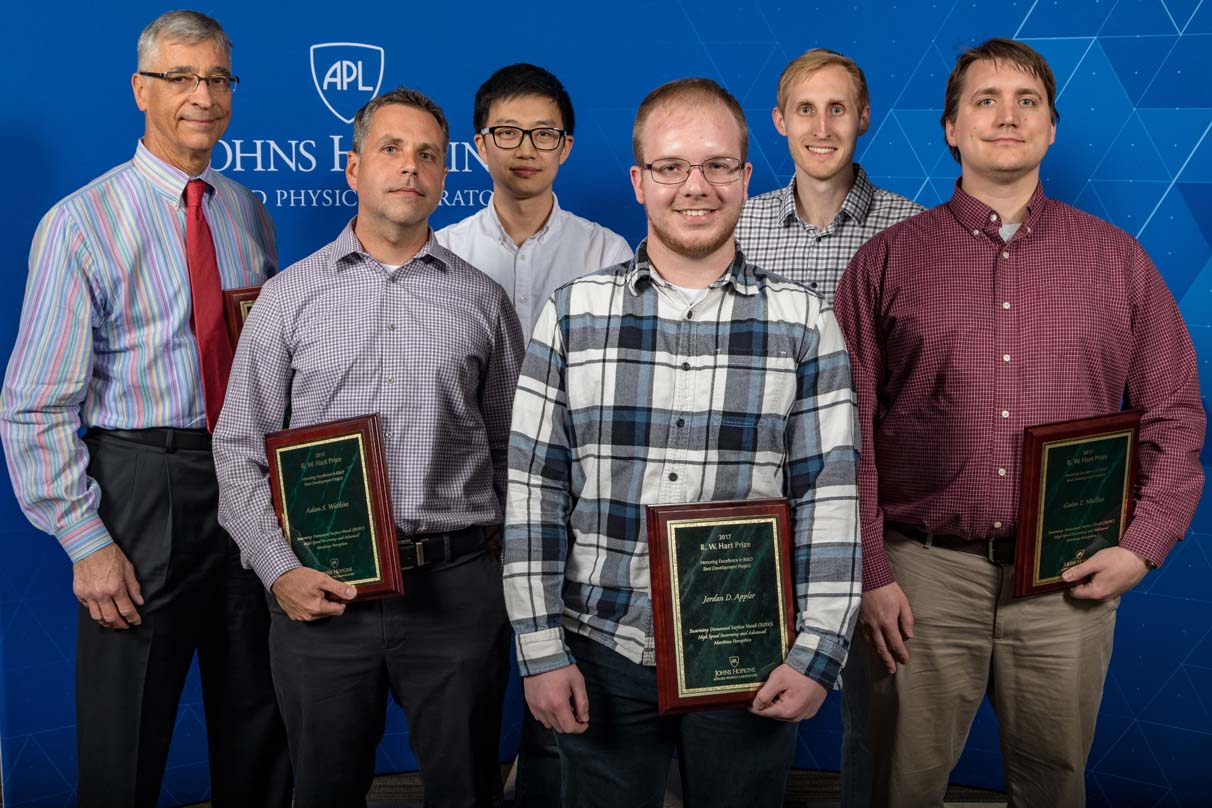
Credit: APL
Invention of the Year: Adam Freeman, Konstantinos Gerasopoulos and Christopher Hoffman, for Thiol-ene Based Polymer Electrolytes for Safe, High Performance Flexible Aqueous Batteries. With annual global lithium-ion battery production expected to surge from 30 to 200 gigawatt hours despite being inherently dangerous, APL’s approach provides a safe, flexible and stretchable alternative.
Government Purpose Innovation Award: Robert Fry and Martin Priess, for creating a missile optical fuze that could provide a game-changing, affordable defense against swarms of hostiles.
Bumblebee Award: Jeff Maranchi, Tim Montalbano, Cavin Mooers, Rengaswamy Srinivasan and Steven Storck, for building corrosion protection directly into 3-D parts, increasing the durability of ships and airplanes that are constantly exposed to weather.
Noble Prize: Chris Hoffman and James Johnson, for producing a method for making liquid-crystal polymers using a stepwise procedure and building an apparatus to add to APL’s in-house fiber synthesis capabilities, after their first attempt in developing a method for high-performance fibers was unsuccessful.
Ignition Grant Prize for Innovation: Jason Benkoski, Eddie Gienger and Alex Iwaskiw, for producing mechanically accurate and biologically viable surrogates of bone for use in injury treatment, biomechanical testing and regenerative medical applications.
Combustion Grant Prize for Innovation: Jacob Alldredge, Jacob Epstein and Kyle McElroy, for demonstrating a novel and precise electromagnetic pulse weapon.
Propulsion Grant Awards (tie): Jessica Dymond, Jared Evans, Erin Hahn, Craig Howser, Thomas Mehoke, Justin Osborn, Corban Rivera, Peter Thielen, Briana Vecchio-Pagan and Josh Wolfe, for a project integrating technologies for detection, analysis, and attribution in the event of a bio attack.
Dave Barsic, CJ Della Porta, Luke DeYoung, Austin Dress, Matthew Fall, Matthew Giarra, Chad Hawes, Frank Serna, Derik Thompson and Caleb Wang, for using artificial intelligence to increase the search speed of undersea objects while reducing the number of systems needed to cover hundreds of square miles.
Mission Accomplishment for Current Challenge: Daniel Barlow, Max Beck, Ray Cooke, Evan Gillett, Brendan Gotowka, Karl Kreatschman, Tom McIlroy, Javier Ortiz, Richard Shelsby and David Shibilsky, for exceeding all expectations in acoustic trials for the Surveillance Towed Array Sensor System, known as SURTASS.
Mission Accomplishment for Emerging Challenge (tie): Jennifer Cooper, CJ Della Porta, Patrick Ferat, Lee Rogers, Iman Schurman, Cory Sheffer, Robin Shellman, John Sweeney and Michael Thompson, for exploring and demonstrating the benefits of an advanced acoustic sensor system that could extend the detection range and improve the security, survivability and effectiveness of the U.S. submarine force.
Natalie Bos, Tom Clark, Jean Kalkavage, William Kirschner, Kristopher Lamont, Robert Landle, Tim Magnani, Robert Schmid, Jay Song and Brian Stevens, for developing and delivering a technology to counter advanced threats operating at frequencies that extend into millimeter-wave regions.
Enterprise Accomplishment Award: Joseph Bennett, Brian Kilheffer, Lanli Liu and Mark Sutton, for OPSLink, an application that significantly improves the security and compliance posture for a classified processing environment by providing actionable intelligence to key personnel.
The Alvin R. Eaton Award: Glen Long, for supporting a variety of sponsored efforts across APL with his strong technical skills, domain expertise and outstanding reputation in the intelligence community.
Director’s Award for Special Achievements: Cheryl Beard, Juan Juarez, Dustin Nicholes, Michelle O’Toole, Krunal Patel, Kathleen Perrino, James Riggins, Katie Souza, Hala Tomey and Radha Venkat, for successfully demonstrating a high-bandwidth, free-space optical communications system during the U.S. Navy’s Trident Warrior Fleet Exercise 2017.
Master Inventor: Earned by Leo Gauthier in recognition of his 10 issued U.S. patents while employed at APL. He is the 28th person to receive this award.
Publication Awards
Author’s First Paper in a Journal or Proceedings: Carolyn Sawyer, for “Two-dimensional laser-induced ablation modeling with integrated melt flow and vapor dynamics,” published in the Journal of Laser Applications.
Outstanding Paper in the Johns Hopkins APL Technical Digest (The Walter G. Berl Award): Stewart Bushman, Andy Calloway, Rob Gold, Daniel O’Shaughnessy and Dipak Srinivasan, for “Maximizing MESSENGER’s Science Return with Technologies and Innovation.”
Outstanding Research Paper in an Externally Refereed Journal Publication: Jeff Barnes, Dave Clader and Dennis Lucarelli, for “Quantum error-correction failure distributions: Comparison of coherent and stochastic error models,” published in Physical Review.
Outstanding Development Paper in an Externally Refereed Journal: Amanda Haapala Chalk, Martin Ozimek, Christopher Scott and Fazle Siddique, for “Dual Satellite-Aided Planetary Capture with Interplanetary Trajectory Constraints,” published in the Journal of Guidance, Control, and Dynamics.
Outstanding Professional Book: Ralph Lorenz, for “Cassini-Huygens Owners’ Workshop Manual” published by Haynes.
Outstanding Special Publication: Dave Karig, for “Cell-Free Synthetic Biology for Environmental Sensing and Remediation,” published in Current Opinion in Biotechnology.
Publication Award for Conference Paper: Chris Ratto, Matt Roos and Mike Wolmetz, for “Approaches to Zero-Shot Stimulus Decoding in ECoG (electrocorticography) and Potential BCI (brain-computer interface) Applications.”
Lifetime Achievement Publication Award: Rob Gold, for his lifetime achievement through a substantial body of publications that are significant in terms of peer recognition, prizes, citation frequency, or influence in the innovation ecosystem.
R. W. Hart Prizes for Excellence in Independent Research and Development
Best IRAD Research Project: Inference Under Uncertainty, with principal participants Philip Graff, Matt Kinsey, Jeff Lin and Cetin Savkli.
Best IRAD Development Project: Swarming Unmanned Surface Vessels: High Speed Swarming and Advanced Maritime Perception, with Jordan Appler, Mark Gaither, Michael Hannan, James Horris, Galen Mullins, Lee Schloesser, Paul Stankiewicz, Adam Watkins and Da Xu.
